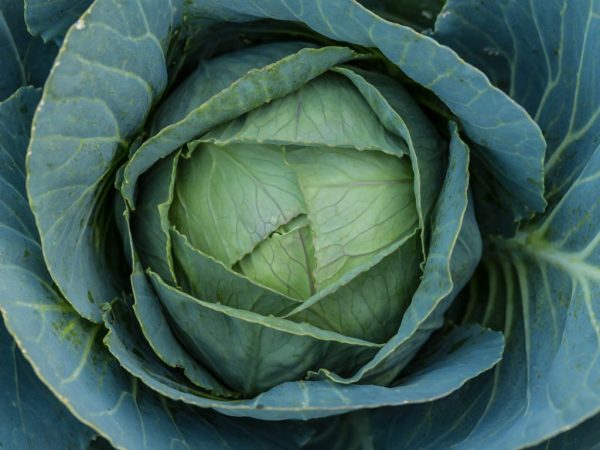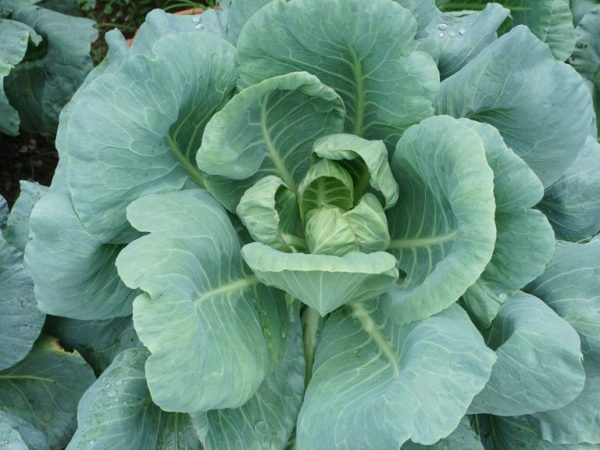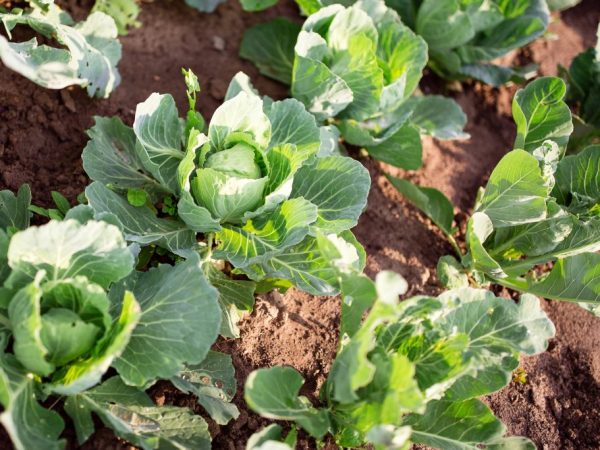Characteristics of white cabbage varieties Adaptor f1
White cabbage Adapter is a high-yielding hybrid of the Dutch breeding of the Syngenta company. It was entered in the State Register in 2010. Recommended for cultivation in the Central region for commercial and industrial use.

Characteristics of white cabbage varieties Adapter f1
Variety characteristic
The adapter is a medium-late, vigorous variety with a growing season of 110-125 days. It is distinguished by its high yield and commercial quality of heads of cabbage. On average, 140-160 tons of cabbage are harvested from 1 hectare, if the rules of agricultural technology were followed.
The hybrid is frost-resistant, withstands spring frosts down to -5 ° C, tolerates short-term periods of drought well.
Description of the head
The f1 adapter is a variety characterized by uniform large heads. Getting heads of commercial quality - 85-90%.
Characteristic:
- weight - 2-3 kg, with enhanced agricultural technology - up to 6 kg;
- round shape, slightly flattened;
- the color is green-silver with a waxy coating;
- leaves of medium size, wavy along the edge;
- head of cabbage on the cut;
- density - 4.2 points;
- stump of medium length.
Using
Cabbage Adapter can be stored for up to 3 months, has a good taste and crispy texture. In the process of salting, it does not lose its density.
Nutritional value (per 100 g):
- calorie content - 28 kcal;
- carbohydrates - 4.7 g;
- proteins - 1.8 g;
- fats - 0.2 g;
- fiber - 12%.
Growing

The yield of plants depends on the quality of care.
Compliance with the rules of cultivation at all stages of the growing season depends on the quality and level of yield of the variety.
Sowing seeds
White cabbage is grown in seedlings. Cabbage seeds undergo pre-sowing processing in production, therefore they do not require additional manipulations before sowing. Seed germination rate Adaptor - 85-90% for 3-4 years. According to the description, Adaptor cabbage is mid-season, so it is sown for seedlings after April 10.
Soil preparation
It is important to carefully approach the preparation of the soil for growing seedlings. A universal soil mixture for vegetables or a self-prepared nutritious soil is suitable. The following compositions are suitable:
- turf soil, compost, peat in a ratio of 1: 1: 1 and 0.5 kg of river sand per 10 kg of the mixture;
- low-lying peat - 4 kg, sod land - 5 kg, sand - 0.5 kg, agroperlite - 0.5 l.
The acquired or prepared soil must be disinfected. The soil is poured with boiling water or a 0.1% solution of potassium permanganate (potassium permanganate).
Seeds are sown to a depth of 1-1.5 cm in slightly moistened soil. The container is covered with cling film and placed in a bright place with a temperature of 16-20 ° C. Seedlings appear in 3-7 days. After germination, it is advisable to lower the air temperature to 12-16 ° C, this helps to avoid stretching the seedlings. Seedlings are watered every 2 days in small portions, avoiding waterlogging of the soil.
Picking
10 days after the emergence of seedlings, the seedlings dive. In the process of picking, weak plants are discarded. Each plant is transplanted into a separate cup (plastic, peat).This is done as carefully as possible so as not to damage the roots. The seedlings are buried to the level of the cotyledon leaves. After picking, the seedlings are protected from direct sunlight. Watering is carried out no earlier than 2 days later.
Landing in the ground
The grown seedlings are planted in open ground at the age of 30-40 days. For planting, holes are prepared in rows according to the scheme 50 x 40 cm. A mixture with 2 tbsp. Is placed in the holes. l. ash, handfuls of onion skins and peat. Seedlings are planted in the afternoon: watered with water, and then placed in the holes along with an earthen lump. The first week after planting, cabbage stops growing, but after complete rooting, it begins to develop intensively.
Care
Hilling

Don't forget to huddle the cabbage
The care technique stimulates the formation of additional roots, prevents blockage during the formation of large heads. Hilling does not allow the soil to dry out excessively.
- Hilling is carried out twice: a week after planting seedlings and 3 weeks after the first.
- The day before the procedure, weeds are pulled out, watered.
- The hoe pulls the soil to the trunk to form a slide.
- Hilling is carried out in the evening.
- The height of the near-barrel slide should not be higher than 25 cm.
Top dressing
Cabbage of the Adaptor f1 variety grows well on fertile soils, it can grow with a slight nitrogen deficiency. In order for the crop to be of high quality, fertilize twice:
- 10-14 days after planting in open ground. Fertilize with fertilizers rich in nitrogen (carbamide, ammonium nitrate, cow dung).
- At the beginning of head formation. Cabbage is fed with organic or mineral fertilizers of phosphorus-potassium composition (bone meal, herbal infusion, ash infusion, superphosphate).
Watering
Regular watering is essential for the development of white cabbage. Watering frequency depends on weather conditions:
- in hot dry weather - 1-2 times a day;
- at a moderate air temperature (18-22 ° С) - every 2 days;
- at temperatures below 18 ° C and no rain - once a week;
- during the rainy season, watering is stopped.
Plants are watered in the evening in furrows in rows or by sprinkling. In industrial cultivation, drip irrigation systems are used. Cabbage is watered throughout the growing season, but a month before harvesting it is stopped so that the heads do not crack.
Diseases and pests
Hybrid Adapter is resistant to diseases such as fusarium and keela. For the prevention of other diseases characteristic of cruciferous plants (mosaics, turnips, peronosporosis, gray rot, mucous bacteriosis), you can:
- before planting, treat the roots with phytobacteriomycin (0.1% solution);
- water the soil with trichodermine (prepare a solution according to the manufacturer's instructions);
- add colloidal sulfur (5 g / sq. m) to the soil.
They observe the crop rotation and change the place of planting of cabbage every year.
Pests
The plant is susceptible to pests such as scoop, aphid, cruciferous flea, slugs. For preventive purposes and for pest control, ash, tobacco dust, vinegar solution, fir oil, garlic infusion are used.
- Leaves are sprinkled with ash and tobacco dust every 10-14 days.
- Table vinegar (200 ml) is dissolved in 10 liters of water and the plants are sprayed in the evening.
- A few drops of fir oil are added to the water for irrigation: its smell repels pests well.
- Grind 2-3 heads of garlic and pour 3 liters of hot water, allow to cool and, diluting with water, bring to 10 liters. Spray the finished infusion.
If traditional methods do not help get rid of pests, you can use specialized insecticides.
Conclusion
The adapter, like many hybrids, is capable of producing a stable yield even under difficult growing conditions. The productivity of this variety and the quality of the heads of cabbage depend on the correct agricultural technology; with intensive care, productivity increases by 70-90%.


